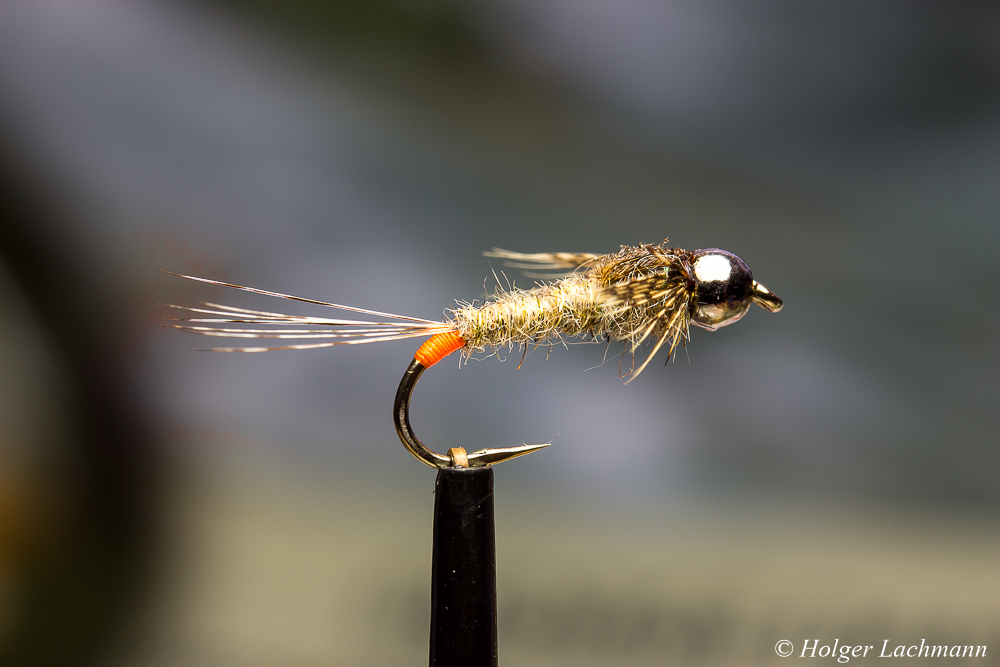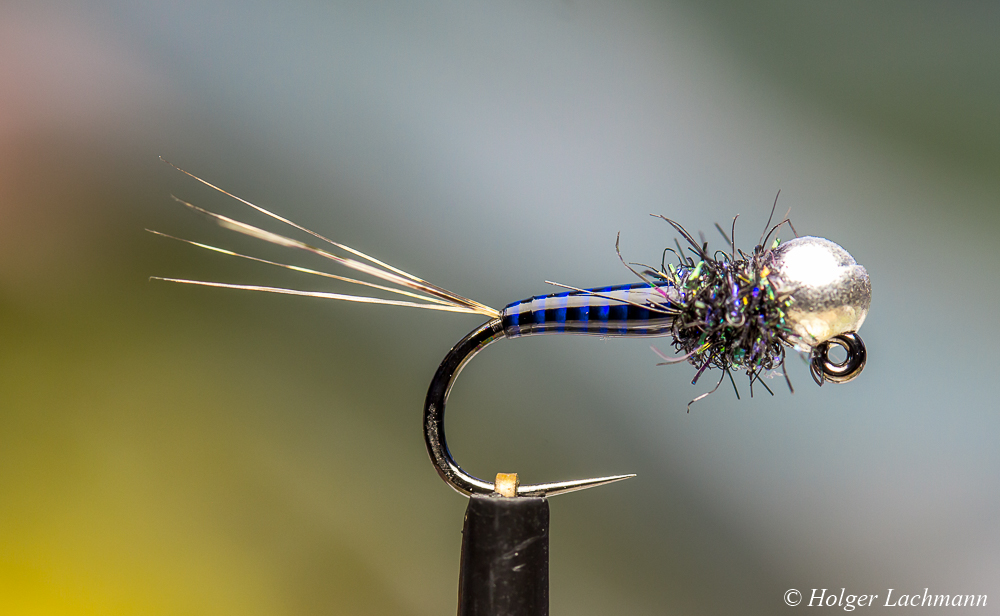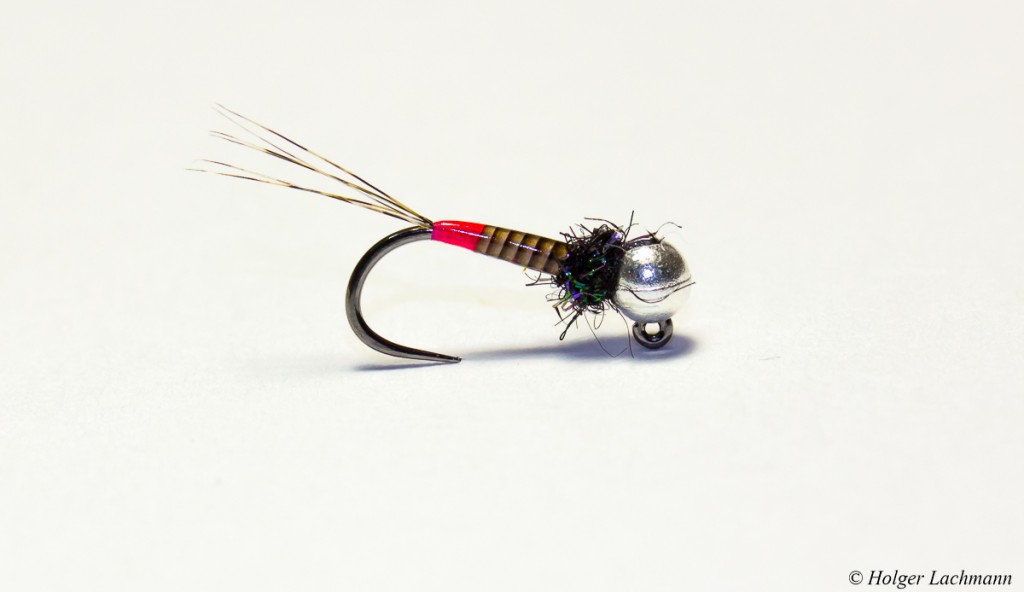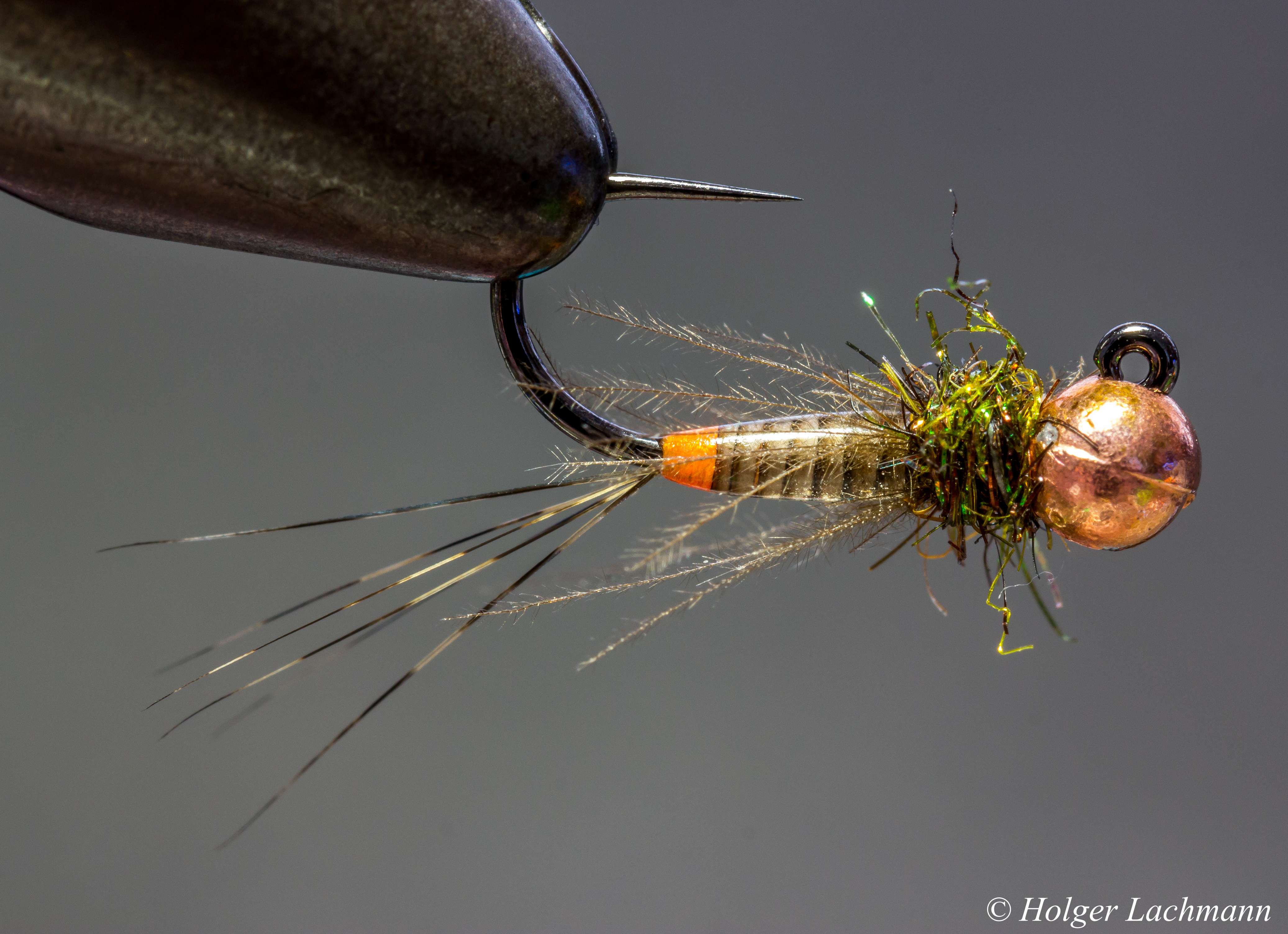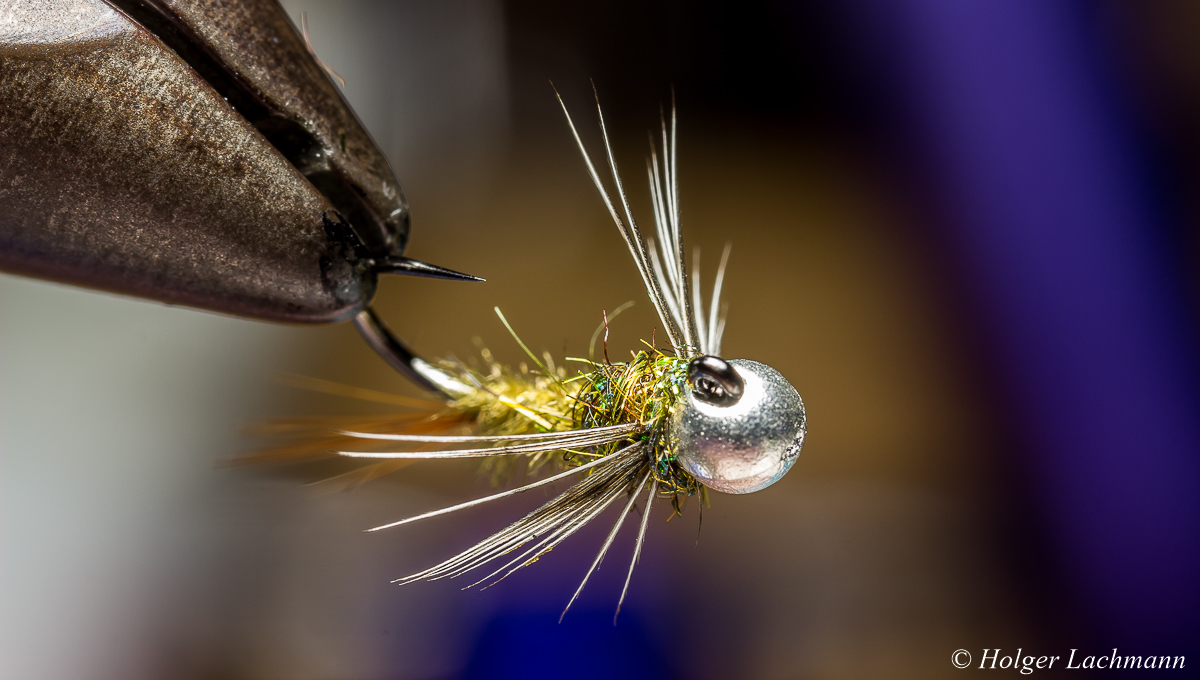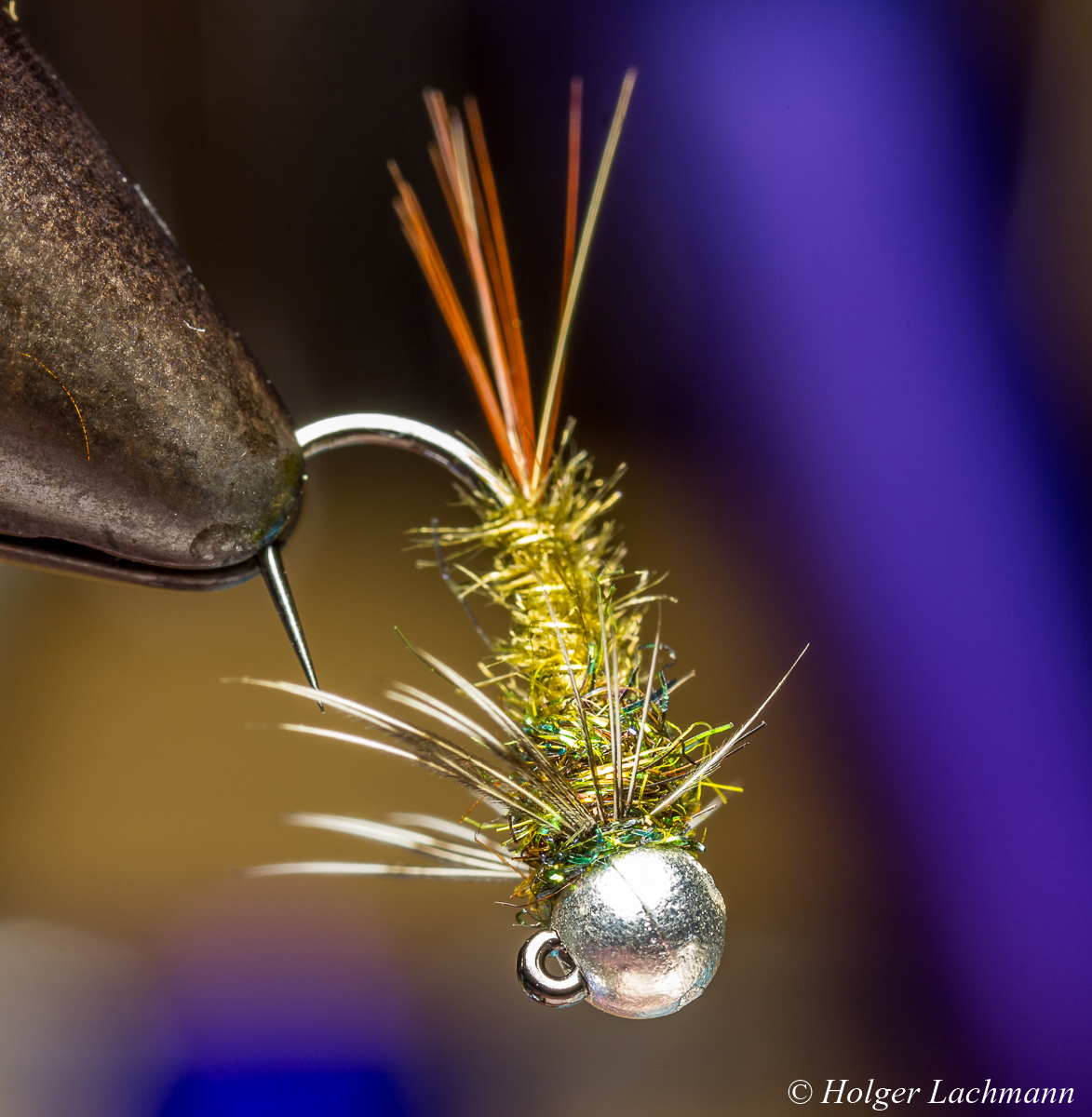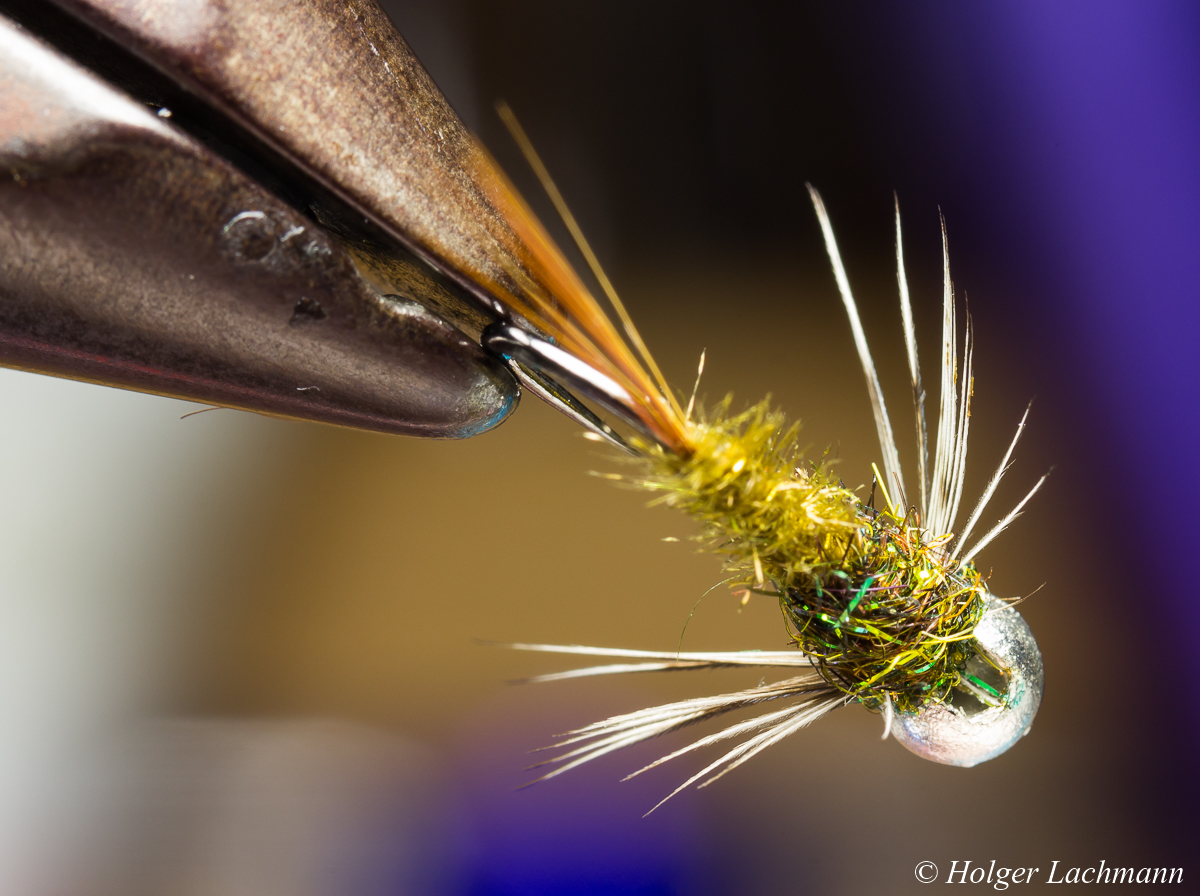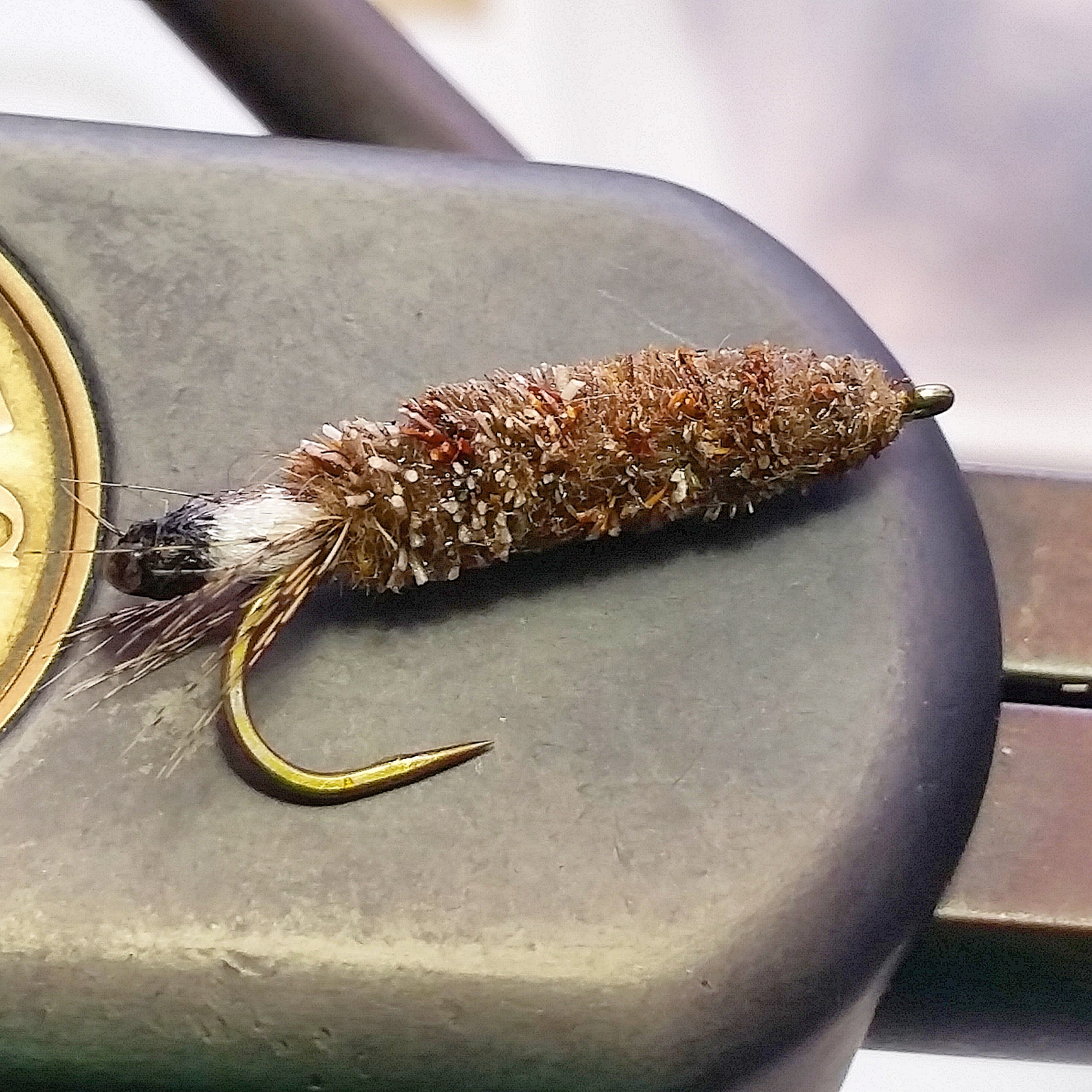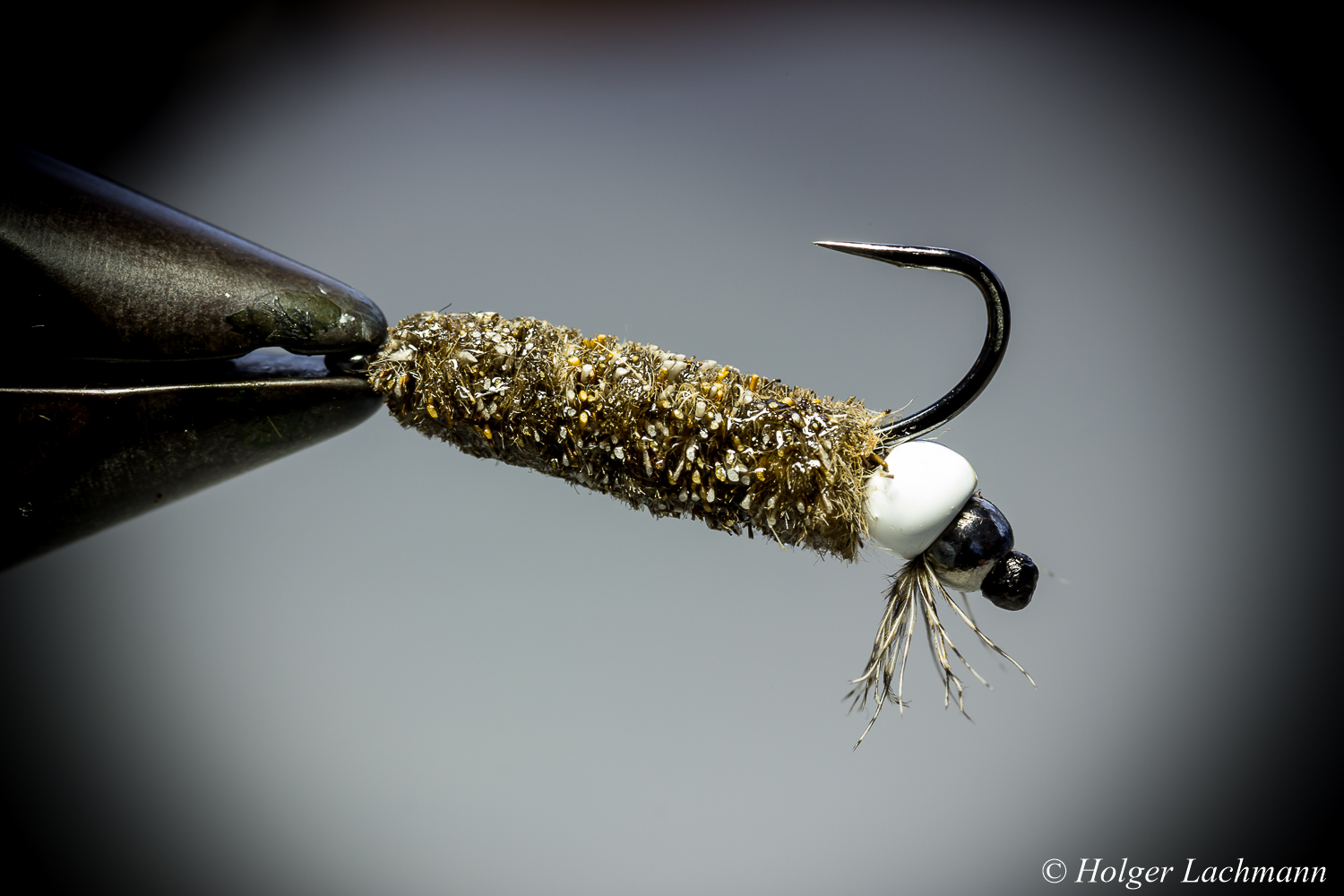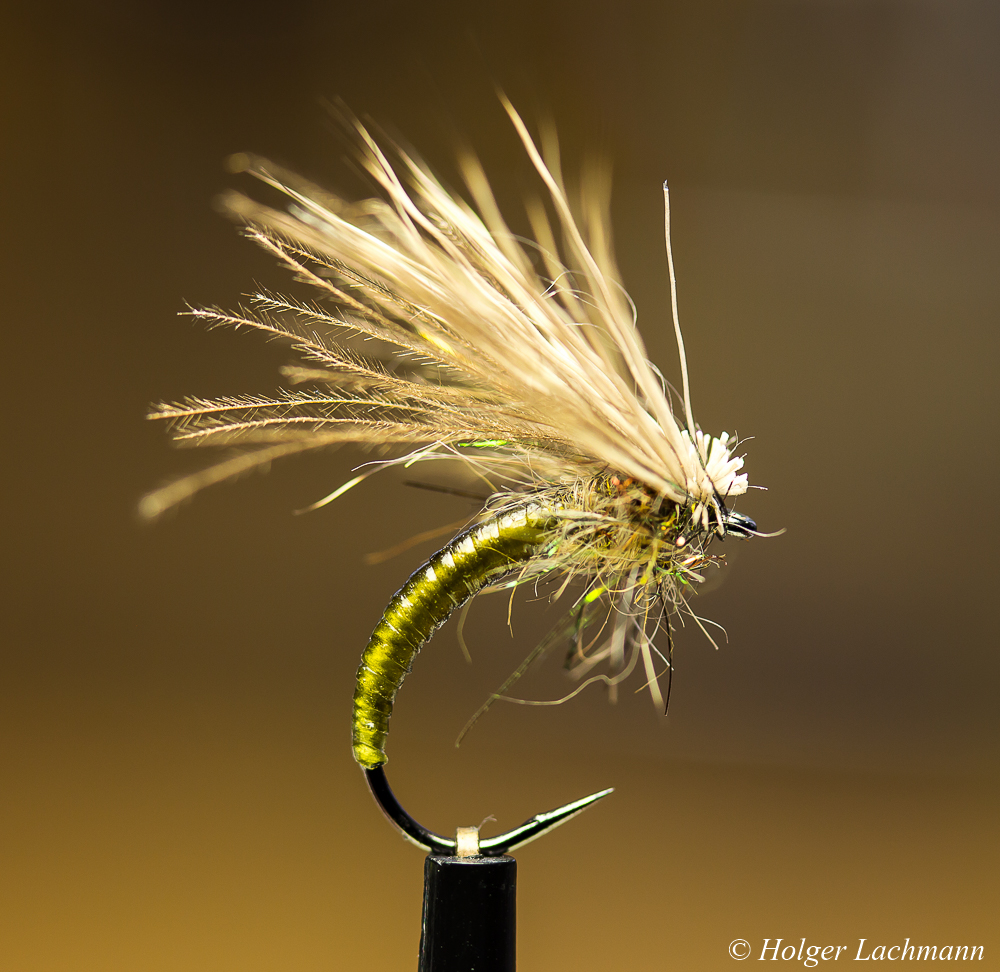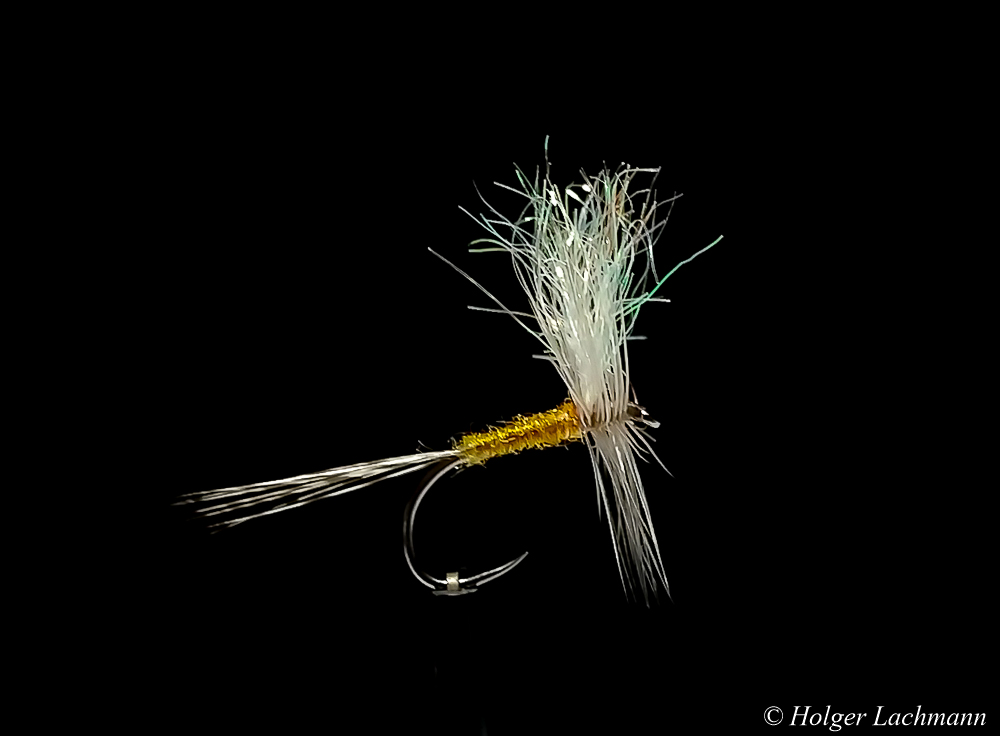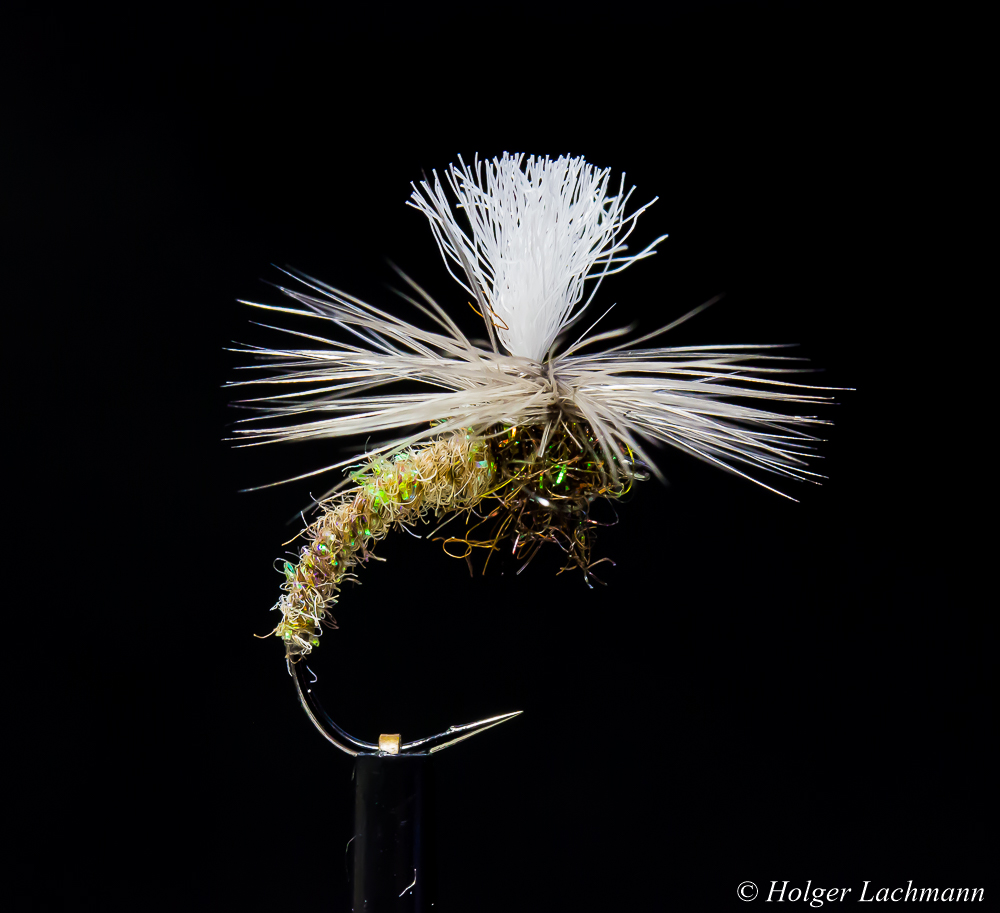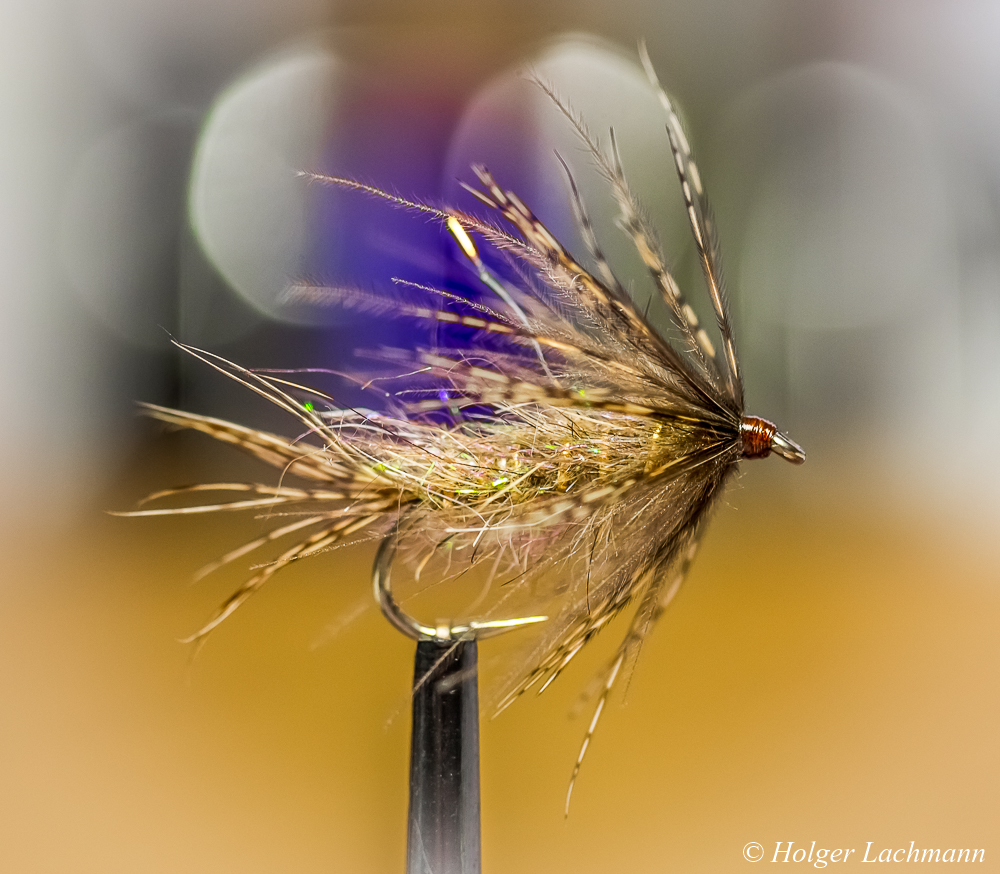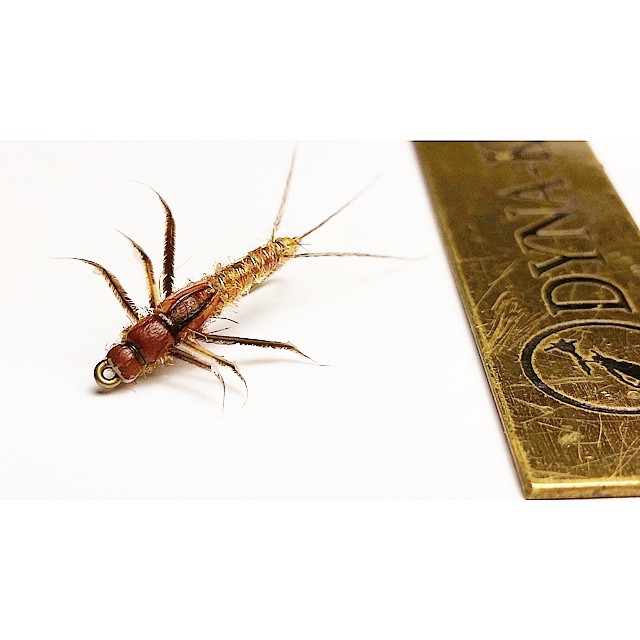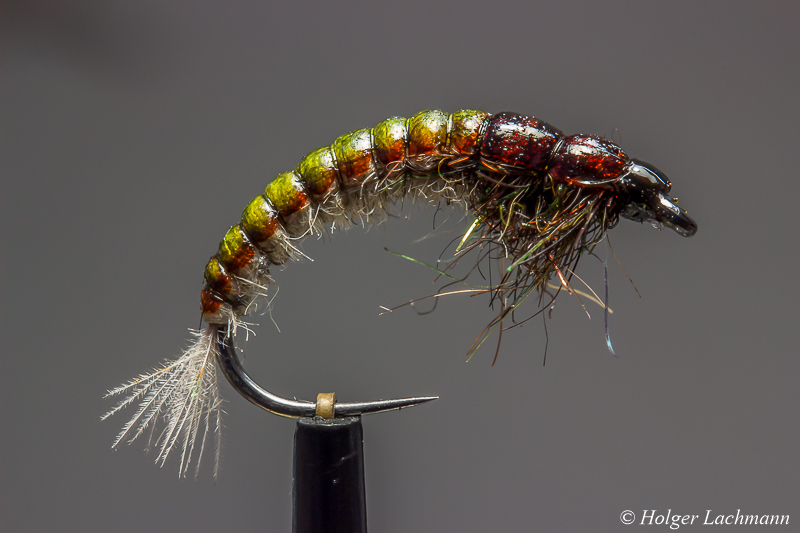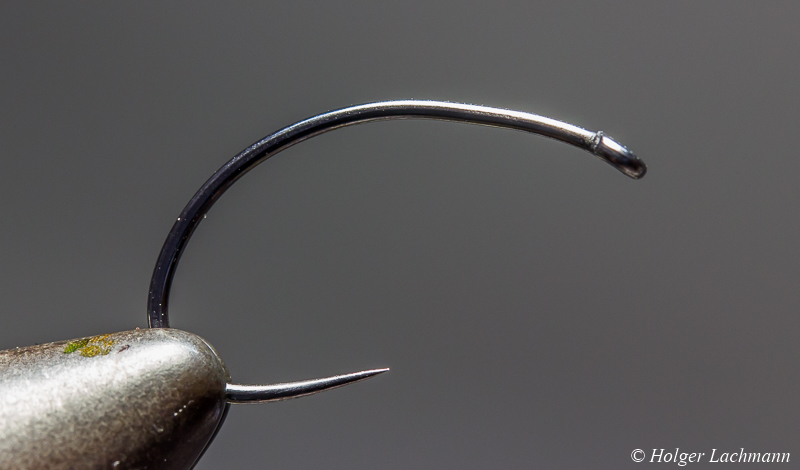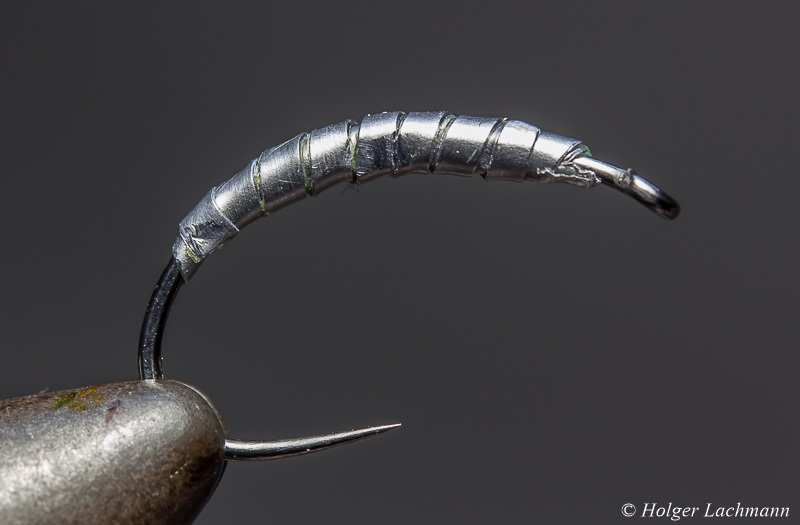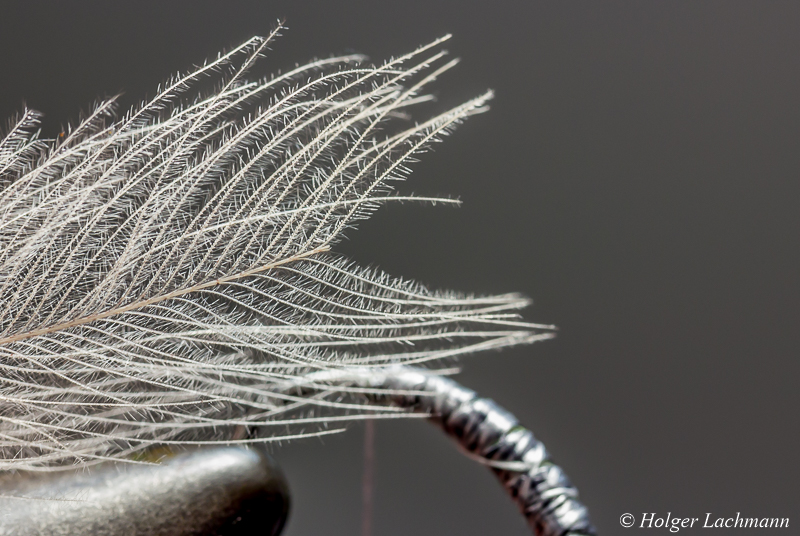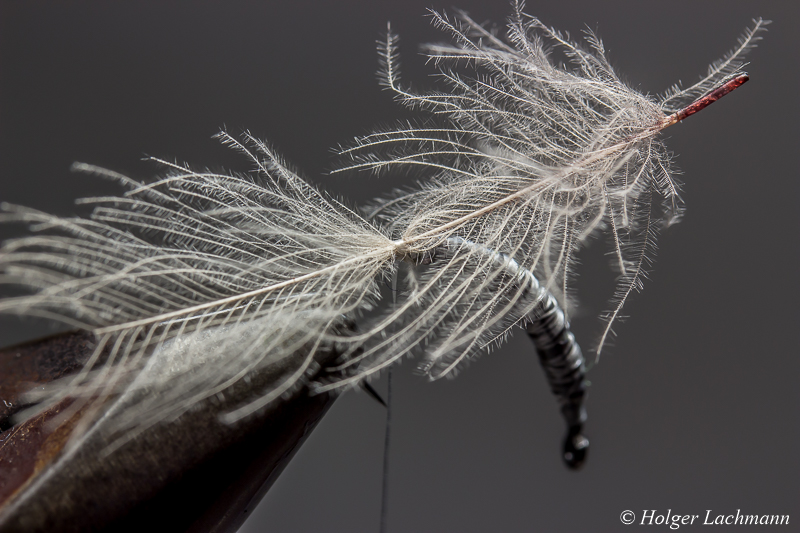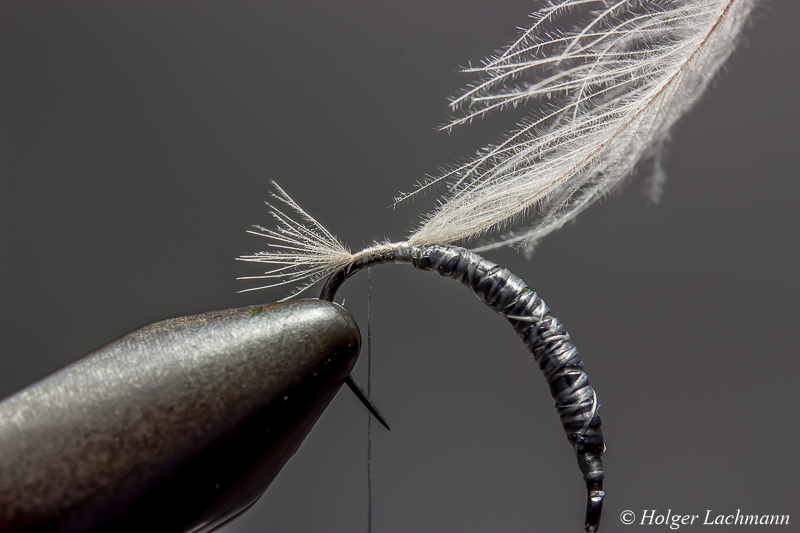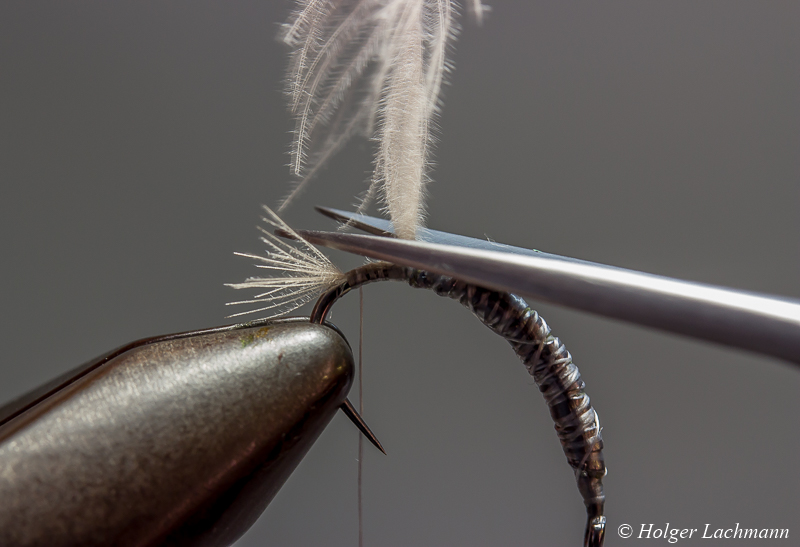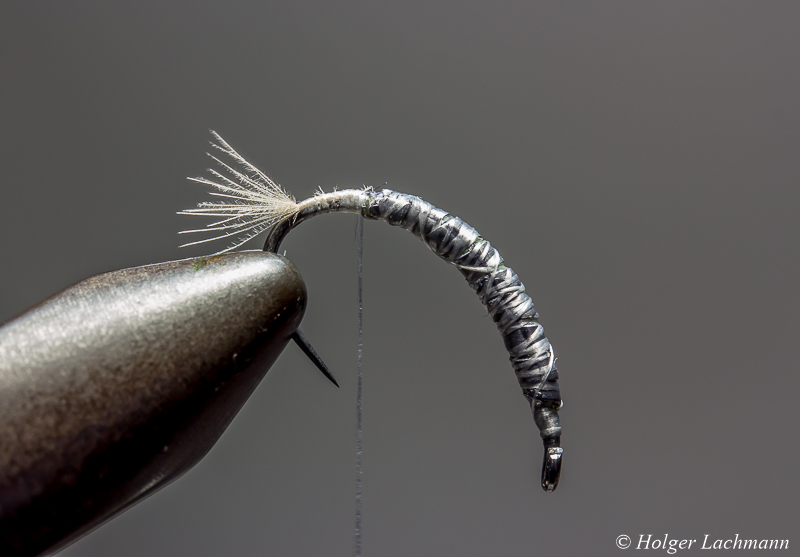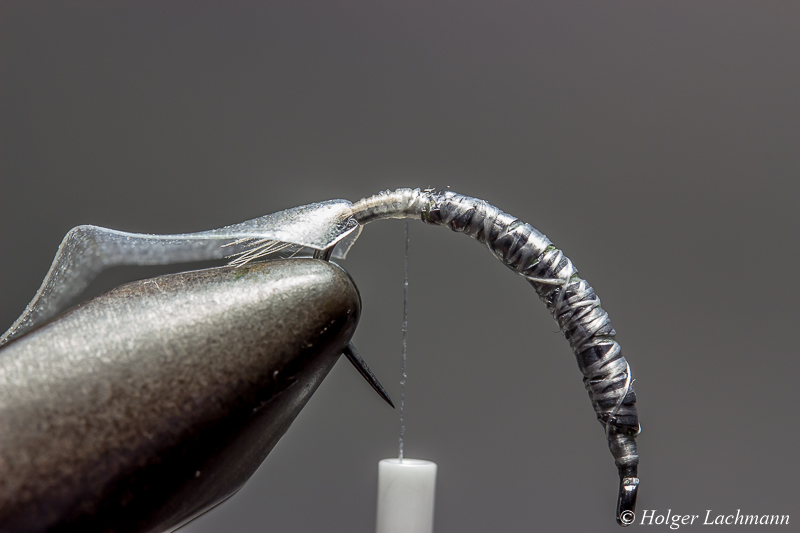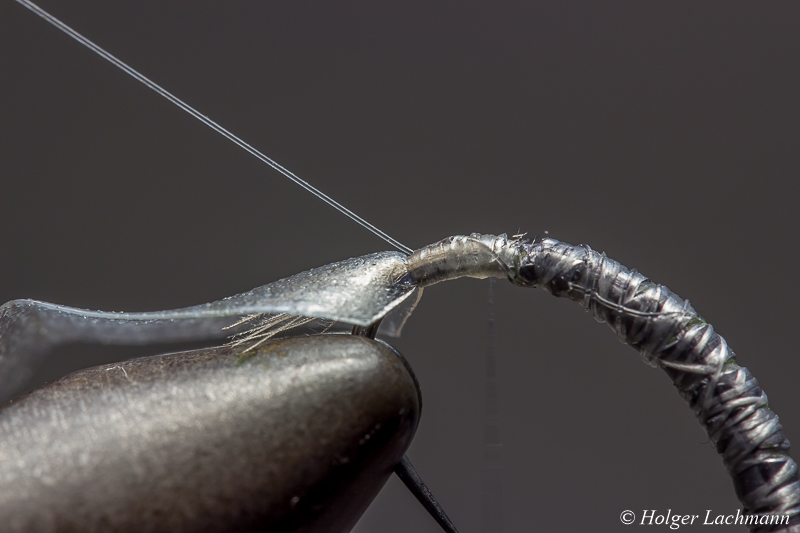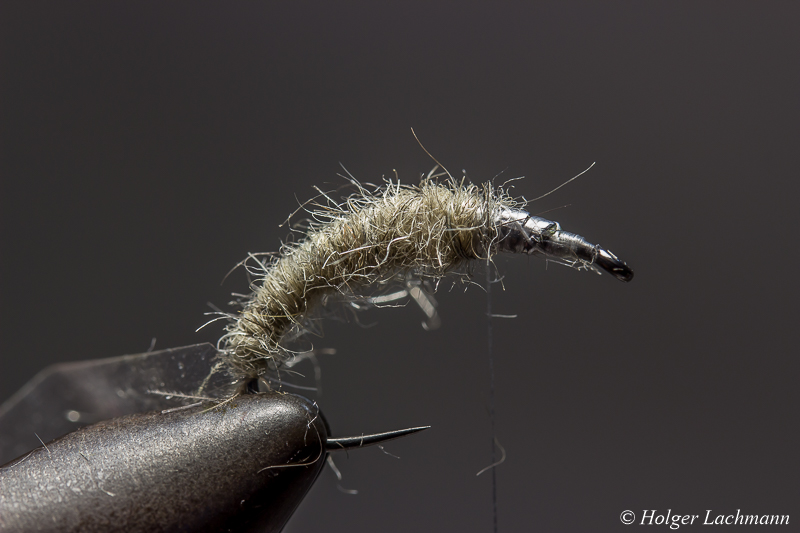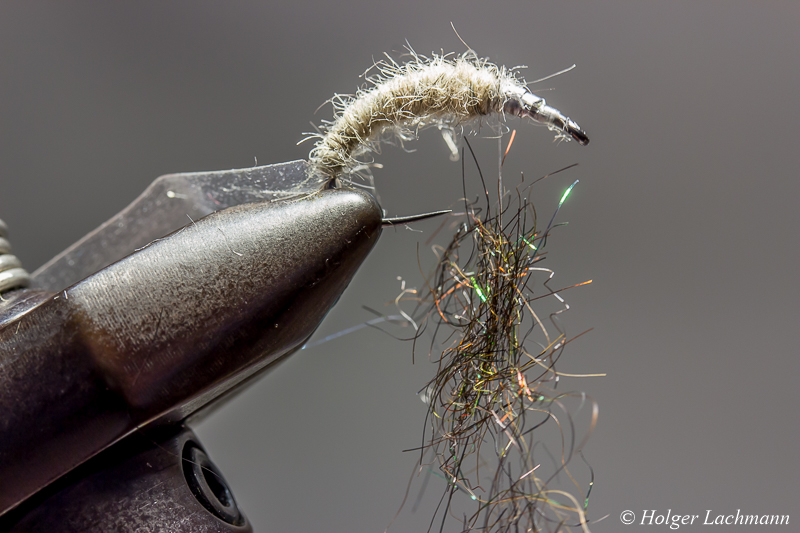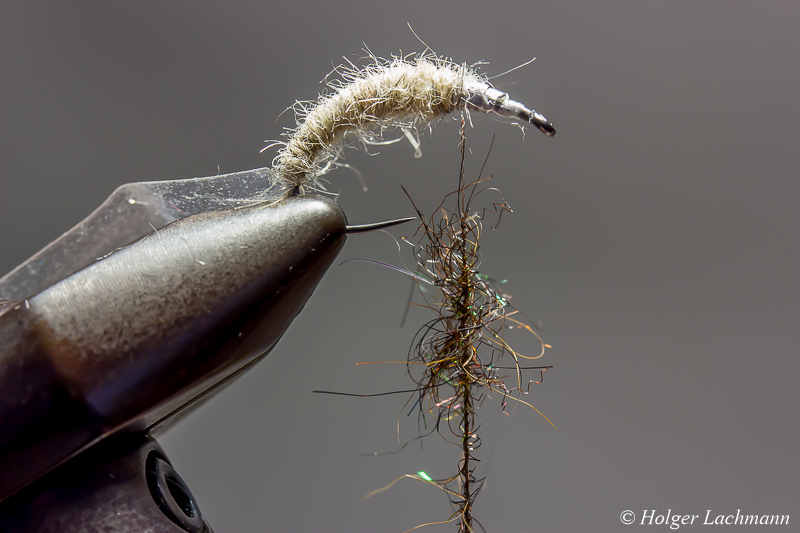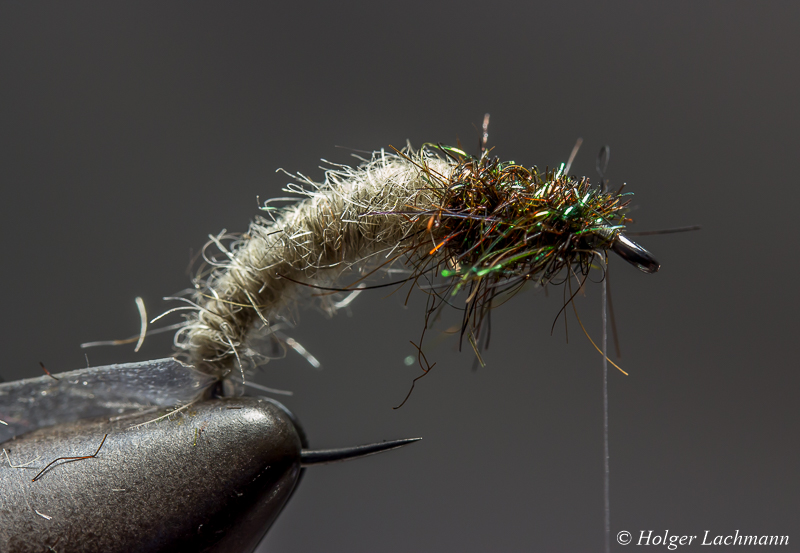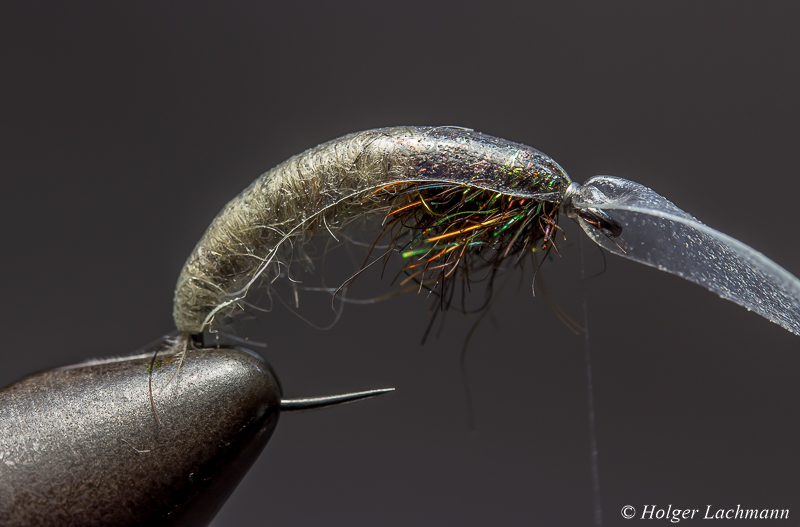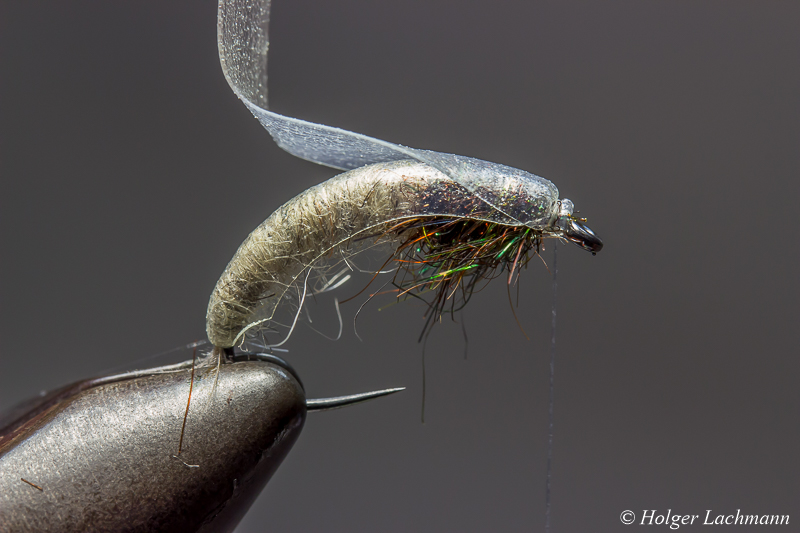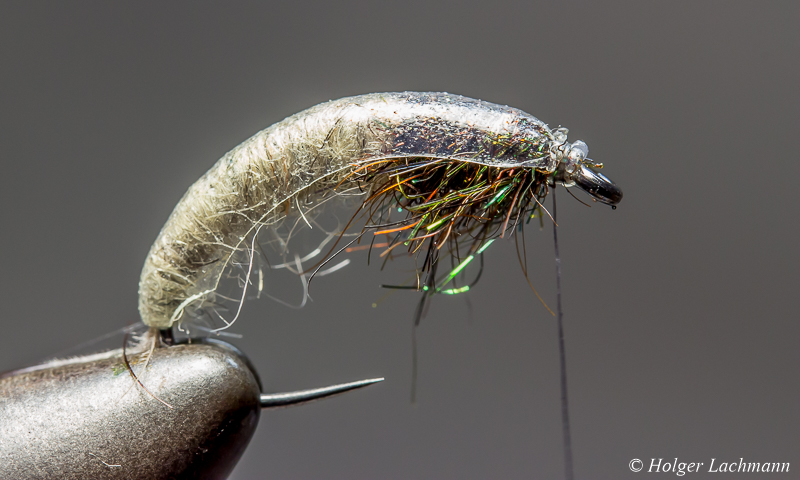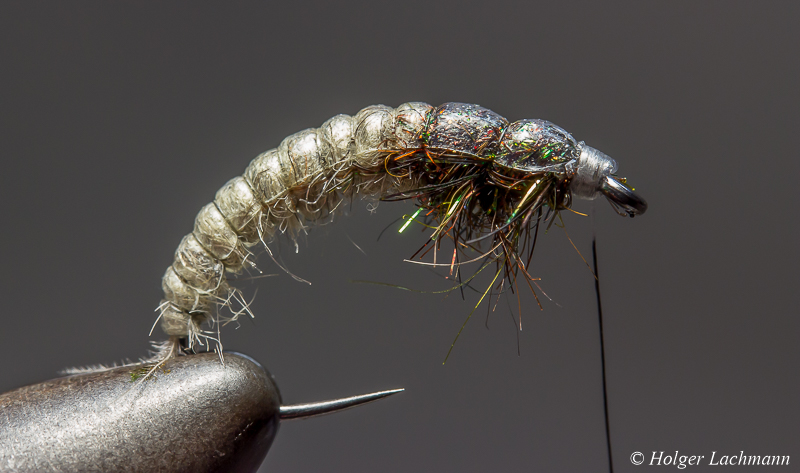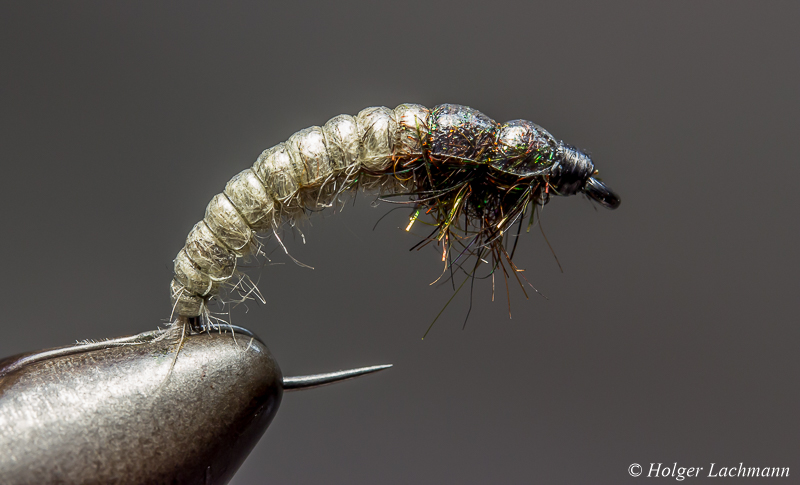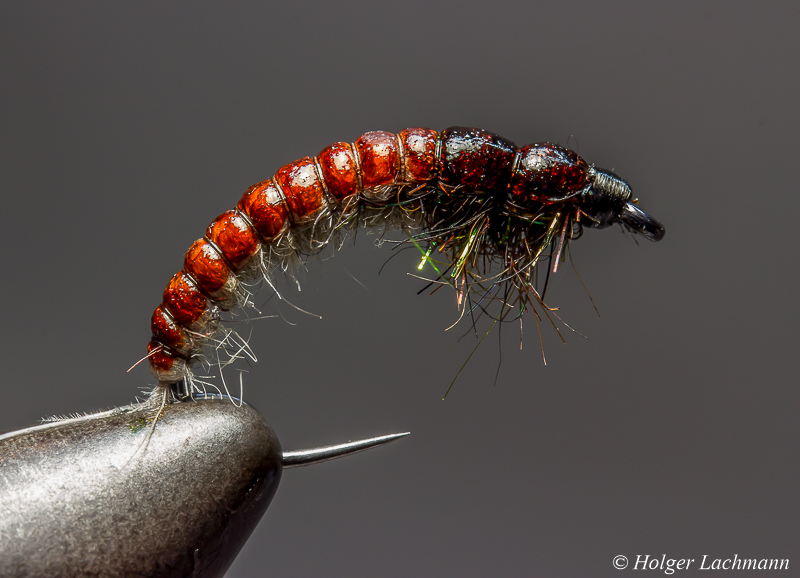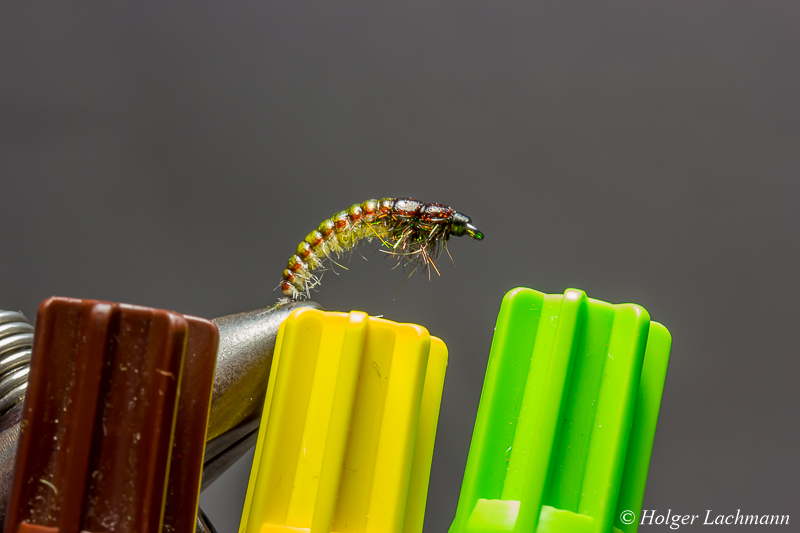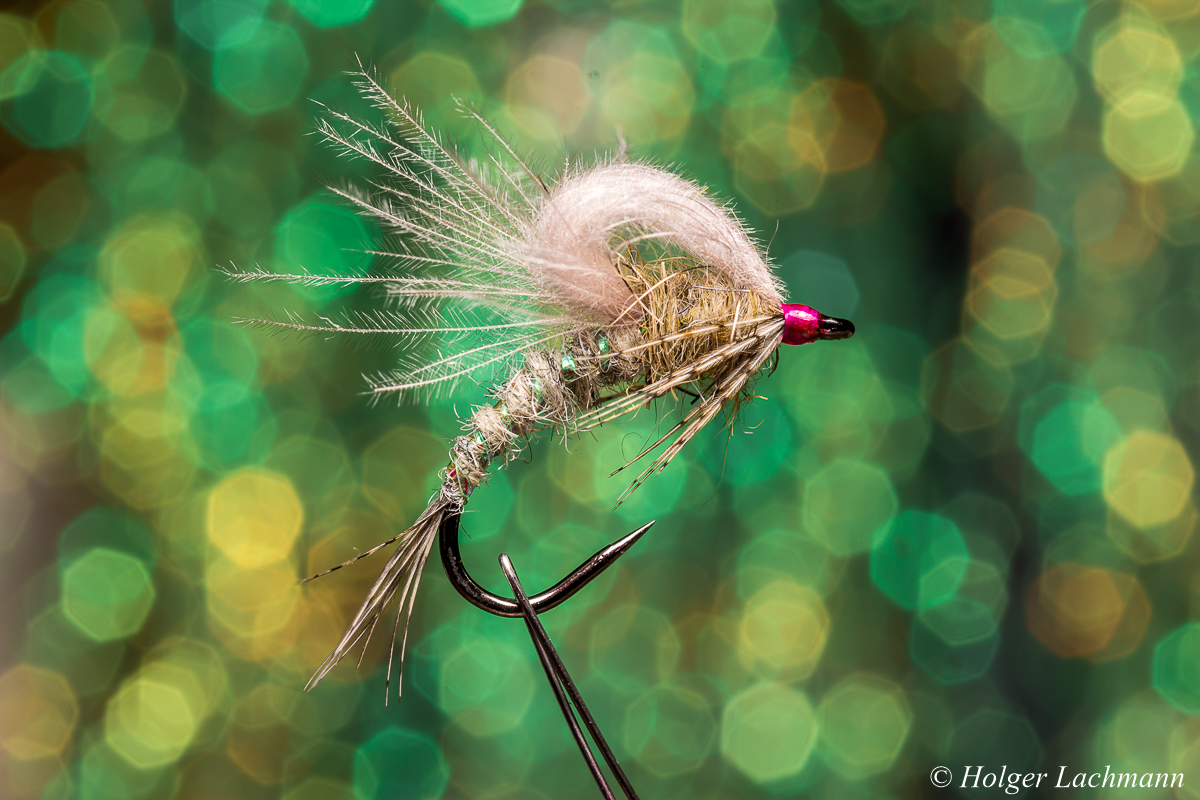Schlagwort-Archive: Äsche
What Chubs like…
In my home river are not many trouts. It’s more a river of „coarse fish“ how the english would say. But the nymphing for chubs is really fun. They are not easy to catch. Often I think they are harder to catch then trout.The good thing about chubs is their size. They are much bigger than the average trout.
In the last time, I discovered, that the chubs love nymphs with an orange hot spot. So I tied some and I caught some really nice chubs, which you can see in the posts of the last days.
„Flybei Special“
Alex Keus from FLYBEI Fly Fishing School and Guide Service said to me, that I should tie a „FLYBEI-Nymph“. I asked how it should look like and he just answered „Surprise me!“.
I know that he’s great in modern nymph techniques, so it has to be a Hanak hook and a little 3mm tungsten bead. Then I remembered, that we once talked about the dubbing I recently bought and he said I’d forgetten to buy the best – the blue one! Ok, he likes blue… time to use the blue Polish Quills. I’ve never used this color before. Just a little Coq de Leon tail and some Peacock Dubbing and the fly is finished. He likes simple nymphs, which sinks extremly fast, so no legs or fancy CDC on this nymph, which slows down the sinking speed of the fly. I hope he likes it! ;-)
Slick Jim
Jigkowskis
Cased Caddis 2.0
Cased Caddis
I didn’t tie a cased caddis since a looooooooooong time, but the nice flies of my buddy Thomas inspired me to think about a new pattern. To be honest, this is a mean fly because of the two tungsten beads. It sinks really fast. The case is secured with Bug Bond Lite, so it’s super durable and hard as the original. I will tie some more with less weight and different weight balances…
Fuzzy Emerger
Tied on a Tiemco 212y #15, the nice segmented body made out of Stretch Flex is hanging in the surface. The dubbing, a mix of Hare’s Ear and Peacock Dubbing is imitating the legs and the CDC and Deer Hair makes this emerger float quite well. Just don’t put floatant on the body.
Good during mayfly hatches and works on a caddis hatch, too.
Dry Flies
Captain FuzzyBug’s ready for a new mission
Is it a wetfly? Is it a nymph? Is it a flymph? – It’s CAPTAIN FUZZYBUG!
Sometimes trout like flies, which are presented actively. That happend to me the last time at the river. Dead drift was not what they liked. The „Leisenring Lift“ brought fish and wet fly swing with a little bit shaking.
Normal wetflies often fish to high in the water, especially in spring, when the water is still very cold and the fish are not willing to rise. CAPTAIN FUZZYBUG is weighted and swings deeper in the water column.
The mix of partridge, hare’s ear, ice dub, tinsel and CDC gives this fly the fuzziness and the trouts the illusion of something eatable. It’s a „in case of“-fly which produces takes even if the normal patterns won’t work.
It’s also not complicated to tie, so tie 3-4 and put them in your fly box. You’ll never know when you’ll need the help of CAPTAIN FUZZYBUG! ;-)
Martin Rudin’s Leftover Nymph
This is my first try on Martin Rudin’s very nice „Leftover Nymph“. It looks very realistic und is not as complicated to tie, as you may think.
Martin did a nice step by step tutorial on his website. It’s in swedish, but you can see clearly how he ties his fly.
Here is the direct link:
There you will find also other nice patterns! It’s worth to check them out!
Caddis Larva Step By Step
Here we go again! After moving to a new server, it’s time for a new step by step tutorial. This Caddis Larva is a very nice imitation of the original and it’s still quite easy to tie. So, it’s not a drama, when you lose it on the river bottom.
You have to fish this larva deep, that’s why there is a lot of weight in it. It still got a slim body, so it sinks fast to the ground. You will find Caddis in almost every river and it’s an important part of the fish’s menu.The coloration with the brown line on the abdomen is not a must. I just did it to show you what for possibilities you have with ordinary marker pens. It’s tied on a # 10 hook, which sounds pretty big, but the body length is close to the original, just try to keep a slim, natural looking body. Ok, let’s start!
Materials:
- Hook: Demmon Competition G601 BL Fly Hook # 10
- Weight: Lead-Foil
- Ribbing: Mono 0,10mm
- Back: Stretch Flex Clear
- Abdomen: Sow Scud Dubbing Beige
- Thorax: Siman Peacock Dubbing Brown
- Thread: G.S.P. 50 D
- Coloration: Edding 3000 Marker Pens
Wind the lead foil in multiple layers around the hook.
Take a CDC feather and cut out the feather steam on the top and tie the feather in like shown on the pictures to create the little tail.
Take the stretch flex and tie it in at the back of the fly. Do the same with the mono for ribbing.
Dub the abdomen on 3/4 of the hook shank with a nice tapering.
Split the thread with your dubbing needle, put the peacock dubbing in the gap, rotate your bobbin to spin the dubbing and wind it around the hook to create the thorax and the legs in on step. Leave a little bit space for the head next to the hook eye.
Fold the stretch flex to the front and catch it with your tying thread next to the hook eye. Fold it back, catch it again with your thread and cut away the excess. That’s the easiest way to form a nice head.
Take the mono and ribb the abdomen in small segments and the thorax in two bigger segments. Catch the ribbing with your tying thread and cut it off. Do two whip finish, cut the tying thread and the tying is done.
With the marker pens, you can give the larva the coloration of your liking or the spicific colors of the originals in your home waters. Put a drop of varnish on the head and the fly is finished, ready to be presented to the fish of your dreams! :-)
Tight lines!
Freestyle Emerger
Winged Ant Step By Step
Ants are everywhere, especially in the summer, when the winged ants are flying around. Fish love to eat them, so it’s logical to have some ants in your fly box. This is an easy to tie pattern and with a little bit floatant, it swims very well. I tied here a version with some foam as underbody, coated with uv resin. It’s for the faster flowing water. I tie another version with the two segments completly made with uv resin without any foam. The secound version sits deeper in the surface film, which looks more natural in slow water, where the fish got more time to take a closer look. The shape of the hook is not so important, as long as the hook gap is big enough.
Materials:
- Hook: Dry fly hook # 12-16
- Body: Foam coated wit Bug Bond UV Resin and colored with a black Marker Pen
- Hackle: Whiting black
- Wings: Flash Dubbing
Tie in the foam and fold it to the front and tie it down.
Do the same for the front segment and color it with a marker pen.
Take some Bug Bond Original and cover both segments with the resin and harden it with your BB torch.
Take some strands of flash dubbing and tie it in just before the first segment. It should be tied in V-shaped, so it looks like wings.
Tie in a black hackle and wind it in three turns to the front and catch it with your thread and do a whip finish.
The result. A nice little ant fly ready for the fish.
From Big To Small
After tying some streamers, I thought I need a break and should tie some smaller stuff. This is a fully dressed parachute dry fly size 22 with a quill body secured with Bug Bond Lite. For the tail I used Coq de Leon and the hackle is grizzly from Whiting. The wing post is made with Tiemco Aero Dry Wing.


